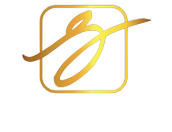
Facial Surgery
The loss of youthful contours in the face can be due to a variety of factors including thinning of the skin, loss of facial fat, bone reabsorption of the facial skeleton, sun damage, smoking, as well as heredity and oxidative stress.
Facelift is a surgical procedure that proposes to specifically treat the visible signs of aging on the face and / or neck, repositioning the facial tissues towards the location they occupied in youth, respecting facial features and expressions.
Since it is not possible to design a universal technique for all patients, the facelift precedes a solid knowledge of the anatomy and a deep understanding of the elements to be corrected. Thus, careful planning and subsequent application of precision techniques are achieved that eliminate excess flaccid skin, reposition or resect fat, and repair loose fascia and musculature.
When the changes generated by aging cannot be compensated with minimally invasive techniques, lifting is proposed, this being an unparalleled tool for addressing the signs of aging.
There are different types of procedures, from least to most invasive ones. In all cases, an attempt will be made to use techniques that minimize the visibility of scars, trying to leave them in strategic places and natural folds.
It is common to combine this procedure with blepharoplasty and facial fat transfer, thus enhancing the facial contour lost in the same surgical act.
Key points: Pre – post auricular scar – temporal zone Internal and external points Surgery time: 150- 180 minutes. Anesthesia: general Hospitalization: 24 hours. Pain: level 3 on a scale of 10. Recovery: 96 hours of relative rest (complete recovery at 30 days). Hospitalization in a highly complex clinic.
The eyes are a focal point in the analysis of upper and middle facial aging. Blepharoplasty is integrated with the correction of the position of the eyebrows and the correction of the middle facial decline.
In the upper eyelid, the aims of a blepharoplasty include preservation of superior orbital fullness and fixation of a defined upper lid crease. The excess skin of the eyelid is conservatively removed, placing the scar on the fold of the eyelid. From this approach, it is possible to remove the fat bags (orbital fat) preserving the function and natural shape of the eye. Given the thickness of the tissue in this area, the scar achieved with this procedure is imperceptible.
In the lower eyelid, aims include a smooth transition between the cheek and the eyelid while restoring the youthful shape of the eyes. These ideals may require canthopexy, preservation or repositioning of periorbital fat, and careful anatomical manipulation of the forehead and cheek. The trans conjunctival technique is used for those combined procedures in which the main objective is to shorten the lower eyelid and rejuvenate the gaze, preserving the orbicularis oculi muscle (function of closing the eye) without visible external scars.
Key points: Imperceptible scar and only in the crease of the upper eyelid. Internal points (care of your skin) Surgery time: 60 to 90 minutes. Anesthesia: sedation. Hospitalization: 8 hours. Mild pain 3 on a scale of 10. Recovery: 72 hours of relative rest (complete recovery at 30 days). Outpatient hospitalization in a highly complex clinic.
The pinna of the human ear has primarily an aesthetic function. Congenitally prominent ears can be the source of great emotional and psychosocial distress. Otoplasty is a surgical intervention that allows the shape and / or projection of the ears to be modified in such a way that the contours are perceived, soft and natural. It requires a minimal incision that will be hidden behind the ears. Through this scar the cartilage is also restyled, making it fold in the appropriate places; the excess skin is removed and the prominent ear is relocated in a new position closer to the temporal area, head.
Key points: It is done in children and adults. Minimal scar behind the ear Internal points (care of your skin) Surgery time: 90 minutes. Anesthesia: sedation. Hospitalization: 8 hours. Pain: mild 3 on a scale of 10. Recovery: 72 hours of relative rest, then return to activities (complete recovery after 30 days with permanent headband). Outpatient hospitalization in a highly complex clinic.
Rhinoplasty is a procedure in which subtle changes often make profound differences in appearance. It is a surgical procedure whose objective is to restructure the shape and / or size of the nose, especially in the back and tip, also allowing the refinement of the nostrils, and the modification of the angles between the forehead and the nose and between it and the upper lip. It also corrects local alterations acquired by trauma or previous surgeries. It is proposed to achieve a harmonious nose in relation to the patient’s features, natural and consistent with the patient’s features and desire.
An accurate internal and external nasal examination is essential to assess the anatomy and define aesthetic and / or functional problems objectively.
Local alterations such as nasal septum deviations, turbinate hypertrophy and collapse of the nasal valve are likely to be corrected in the same surgical time as an aesthetic rhinoplasty.
Key points: It is carried out for people over 18 years of age. Imperceptible internal or external scar in columella. Surgery time: 120 minutes. General anesthesia. Hospitalization: 8 hours. Pain: mild 4 on a scale of 10. Recovery: 72 hours of relative rest, splint for 7 days. (Complete recovery after 30 days, local edema may fluctuate in the first 12 months) Outpatient hospitalization in a highly complex clinic.
Chin surgery, or mentoplasty, is a surgical procedure to reshape the chin, optimize its projection, harmonize the lower facial third and profile. The initial proposal is a biocompatible silicone implant through an endaural incision or a small incision under the chin. This procedure is often recommended in the context of a rhinoplasty to achieve better facial proportions as the size of the chin can increase or minimize the perceived size of the nose. Plastic surgery and other minor office procedures performed on the lower jawline and chin area can also improve facial proportions although it is temporary and limited in scope. Key points: Internal endoral or imperceptible external scar. Surgery time: 120 minutes. Anesthesia: sedation. Hospitalization: 8 hours. Pain: mild 3 on a scale of 10. Recovery: 72 hours of relative rest. (complete recovery after 30 days) Outpatient hospitalization in a highly complex clinic. LIPOFILLING Fat transfer, also called fat grafting, or lipofilling, is a procedure that uses a person’s own fat resources to reposition it in strategic areas of the same body, correcting contour irregularities or giving volume to the treated area. The fat to be relocated is first sucked from a donor area (abdomen, thighs) and then processed (filtered) in such a way that it is injected pure into the area to be treated. Between 50% and 70% of fat cells survive the transfer process, which means that the results are permanent. Due to the low rate of complications, the autologous nature of the donor material and the positive results of this procedure, its indications have expanded at the facial and body. On the face, it provides volume and restores facial areas deteriorated by the signs of aging.
Fat transfer, also called fat grafting, or lipofilling, is a procedure that uses a person’s own fat resources to reposition it in strategic areas of the same body, correcting contour irregularities or giving volume to the treated area. The fat to be relocated is first sucked from a donor area (abdomen, thighs) and then processed (filtered) in such a way that it is injected pure into the area to be treated. Between 50% and 70% of fat cells survive the transfer process, which means that the results are permanent.
Due to the low rate of complications, the autologous nature of the donor material and the positive results of this procedure, its indications have expanded at the facial and body. On the face, it provides volume and restores facial areas deteriorated by the signs of aging.
Malignant skin lesions, and less frequently benign ones, will require complete surgical resection (excisional biopsy) to stop their growth. The entire excision allows the study of the piece and eventually the taking of appropriate measures for each case, trying to resolve the pathology.
Plastic Surgery allows a complete resection with safety margins, prioritizing oncological resolution while using techniques that preserve the final appearance of the treated area.
POST BARIATRIC SECUELA
With the universal increase in morbid obesity and the concomitant development of advanced laparoscopic techniques, a large number of patients are opting for surgical therapy to reduce excess body weight and thus achieve the resolution of their comorbidities by improving life expectancy.
Although the general balance of massive weight loss is always positive, it leaves consequences that must be examined and treated with discretion and responsibility. These include the malabsorptive state, chronic anemia, loss of skin elasticity, local infection in areas of skin flaps, vascular and coagulation disorders.
As patients lose weight after bariatric surgery, they begin to develop sagging and sagging skin in many areas of the body. Universally, the abdomen and breasts are the main areas of concern in patients who have suffered massive weight loss. However, the thigh, arms and back are also likely to improve. This makes the reconstructive surgery of these patients develop in multiple stages.
Procedures to be carried out will be determined according to medical criteria, general condition of the patient, and priority areas to be treated.
Invasive procedures will require some type of anesthesia. All these are performed by the anesthesiologist of the surgical team. Accredited professional, member of the Association of Anesthesia, Analgesia and Resuscitation of the City of Buenos Aires (AAARBA). European Diploma in Anesthesiology and Intensive Care (EDAIC). Advanced Specialization Diploma in Anesthesiology and Critical Care, University of Valencia. Pain Expert, Postgraduate in Pain Medicine and Palliative Care, AAARBA.
We thus prioritize patient safety. According to the procedure to be performed and the patient’s conditions, a local anesthesia, sedation (neuroleptoanalgesia) or general anesthesia will be chosen.


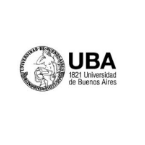
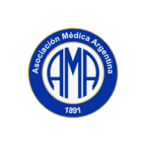
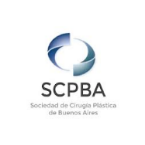
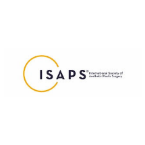


Algunos testimonios de nuestros pacientes
Dra. Natalia Baigorria
Prestador de OSDE y SWISS MEDICAL
Turnos vía whatsapp 1140732489
Consultorio: Junín 1655 (entre Av.Las Heras y Vicente López Recoleta – CABA )
consultas@drabaigorria.com
